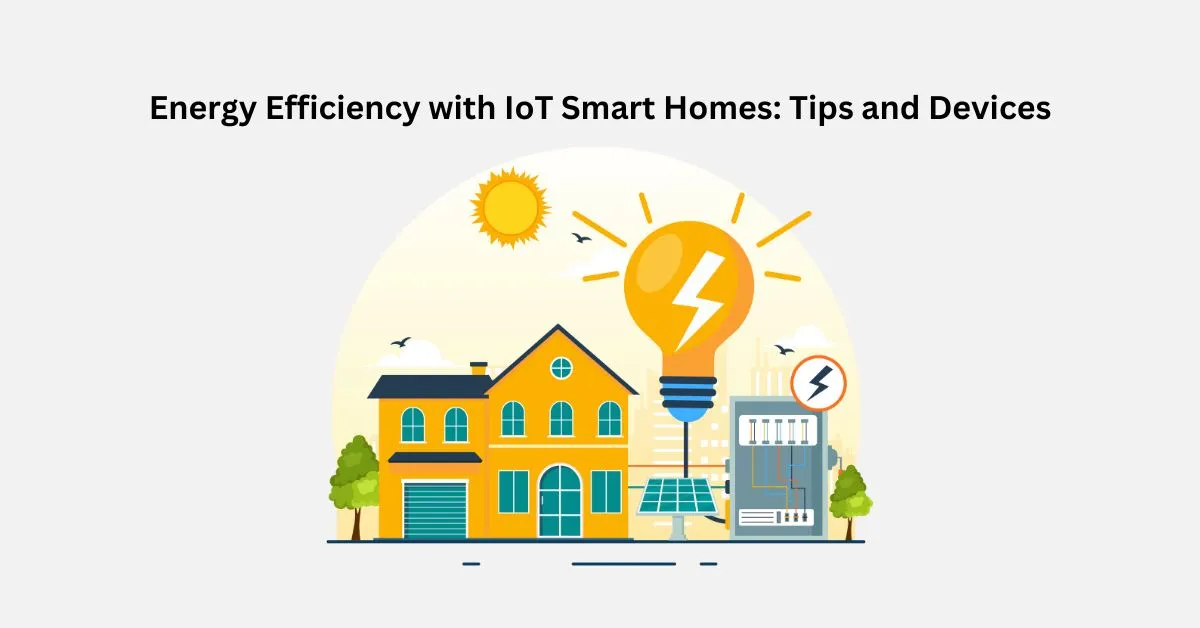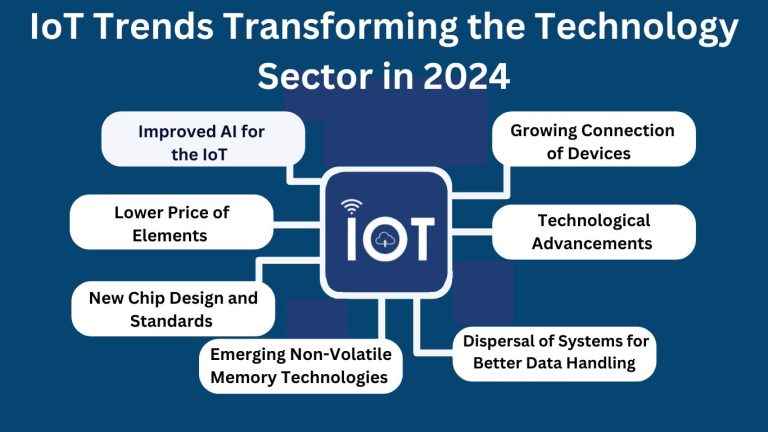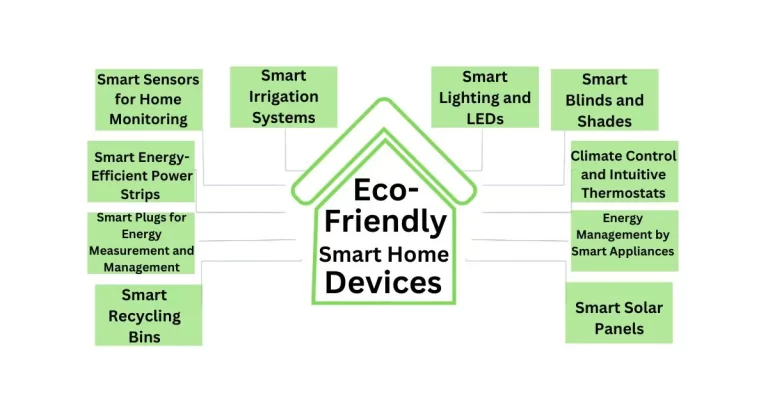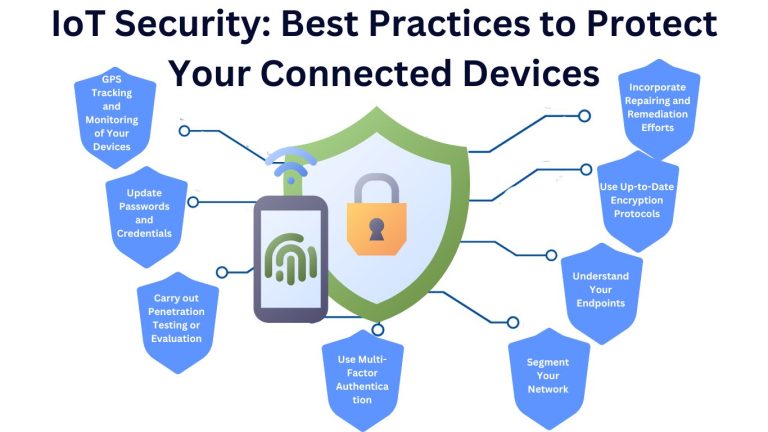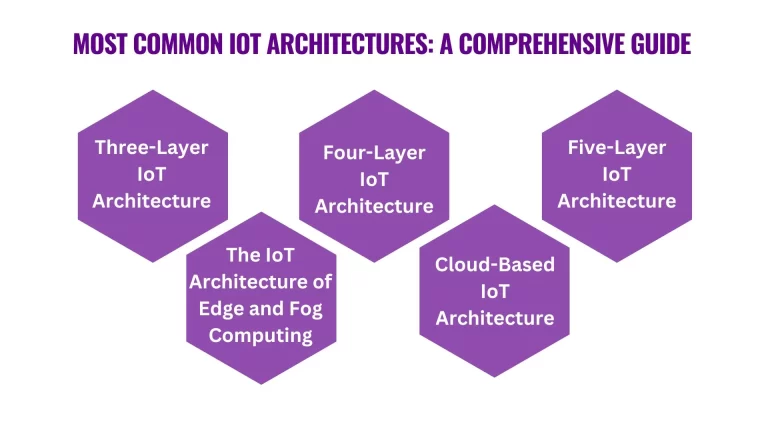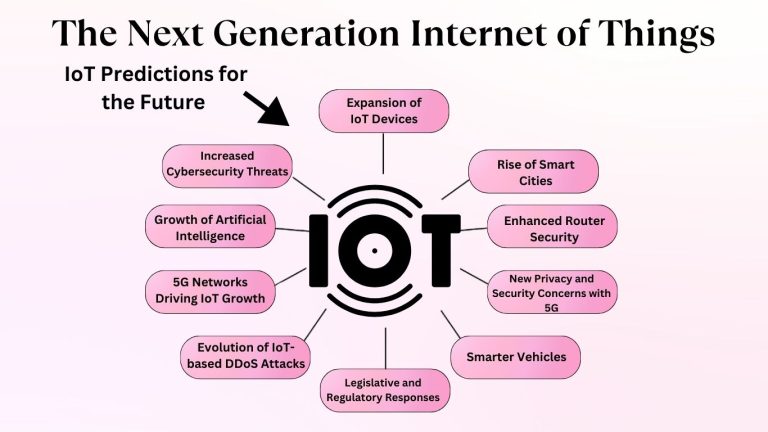Enhancing Energy Efficiency with IoT Smart Homes : Tips and Devices
Energy efficiency with IoT smart homes is changing the way we use and save energy in our daily lives. With smart devices like thermostats, lighting, and energy monitors, you can easily manage your energy use, cut down on bills, and help the environment. The search for energy and energy-efficient devices has shifted to the public eye and gained the main attention of the public in the fight against global warming to increase the sustainability of the world’s resources. The feature of sustainability is of main concern on the available resources in the world and the impact of energy-consuming practices. This awareness is resulting in a complete model shift in how energy is used and conserved in our households and our day-to-day lives. Energy Efficiency with IoT Smart Homes Devices are most trending topic in current era
Smart Home IoT Technologies
Smart technologies in smart IoT homes are used to enhance the efforts towards improving energy efficiency where connectivity, automation, and design features are applied. Homeowners are gradually incorporating IoT solutions to improve energy efficiency with the global energy costs rising and the focus shifting to sustainable living. Smart homes through the use of IoT technology enable real-time monitoring, controlling, and management of energy use in a home to eliminate wastage and lower energy bills without compromising comfort. This guide looks at how IoT can be used to enhance energy conservation within smart homes, offering implementation approaches and identifying critical devices that enable sustainable energy utilization. The IoT has changed how people interact with home systems and appliances. Internet connectivity enables homeowners to remotely manage and monitor energy-intensive systems like lighting, HVAC units, and various appliances. IoT devices can provide information on actual energy consumption and adapt themselves to users’ actions, climate conditions, and varying tariffs. Smart homes through IoT are not only about saving money on the bills but also about environmental conservation and ease. As a result of using IoT systems that can learn new patterns and conditions of the environment, smart homes are a major step toward a more sustainable future.
Environmental Effects of IoT-Enabled Energy Conservation
The energy efficiency of IoT technologies is not only financially beneficial but also has other advantages.
IoT-controlled smart homes help alleviate pressure on energy grids, ultimately reducing the emission of greenhouse gases and other pollutants produced by conventional energy sources. The use of IoT for energy efficiency is a collective impact, which helps in the fight against climate change across the world.
Additionally, IoT devices are typically designed to have long lifetimes and be upgradable to software. These are less likely to contribute to the current environmental problem of electronic waste. The adoption of these devices in one’s home is not only financially wise but is also in line with how one can support larger sustainability objectives.
Enhance Energy Efficiency with IoT Smart Homes Devices and Tips
1. Lighting Control with Motion Sensors
Using IoT-based motion sensors that detect the absence of occupants and switch off the light can greatly help to minimize the wastage of energy.
List of Notable Light Control with Motion Sensors
- Philips Hue Motion Sensor: This sensor works with Philips Hue lighting and automatically controls lighting based on motion and day/night light conditions.
- Eve Motion Sensor: Compatible with Apple HomeKit and provides an easy way to control lighting through Siri voice controls.
- Leviton Decora Motion Sensor Switch: Substitutes traditional wall switches and turns on lights in response to motion/movements.
- Enbrighten Z-Wave Plus Motion Sensor: Connects with Z-Wave systems to turn on lights when there is movement.
- Ecobee Smart Sensors: These sensors are compatible with Ecobee thermostats and offer energy control.
- Aqara Motion Sensor P1: A Zigbee-based sensor with a longer battery duration to control smart home lighting through different hubs.
- Kasa Smart Light Bulb KL130: It has customizable color and white tones, scheduling and remote control through the Kasa app, and compatibility with Alexa and Google Assistant.
- Sengled Smart LED Multicolor A19 Bulb: Control via buttons on the device, enables changing the brightness and color temperature of the bulb, compatible with Alexa and Google Assistant, and works fine even without a central device.
- LIFX Color A19 Wi-Fi Smart LED Light Bulb: Provides accurate color and tunable white with high brightness, application control, and compatibility with most smart home platforms.
- Wyze Bulb Color: It has a color range of up to 16 million and can do tunable white at the appropriate temperatures with the ability to schedule and automate the light, Compatible with Alexa and Google Home.
These smart bulbs make it possible to create flexible lighting, which means that a user can set home lighting to correspond to different activities and moods. Lighting Control with Motion Sensors is on 1 Position in Our Energy Efficiency with IoT Smart Homes Devices List
2. Smart Thermostats for Optimal Climate Management
Smart thermostats are built to understand and incorporate user’s temperature preferences into their indoor environment by controlling heating and cooling based on routine and time. These devices can greatly improve energy efficiency by providing a comfortable indoor climate, according to the user’s schedule, at home or elsewhere.
Notable Smart Thermostats for Energy Optimization
- Google Nest Learning Thermostat: This 3rd Gen thermostat works based on the user’s daily routines and can be controlled remotely through the Nest app and is compatible with Google Assistant and Alexa.
- ecobee Smart Thermostat: It has integrated voice assistant and room sensors, provides zone heating, energy saving, and integration with the most popular smart home systems.
- Amazon Smart Thermostat: This Alexa-compatible thermostat is one of the most affordable in the market and was created by Honeywell, with features such as scheduling and energy-saving modes.
- T9 Smart Thermostat: With room sensors for temperature zoning, T9 controls the climate depending on the occupancy and works with Alexa.
- Emerson Sensi Touch Wi-Fi Thermostat: This thermostat has geofencing and flexible scheduling features which makes it suitable for controlling climate in multiple smart home systems.
These thermostats come with different features such as adaptive learning, zoning, and voice control among others which help users to manage energy usage and comfort. Smart Thermostats for Optimal Climate Management is on 2 Position in Our Energy Efficiency with IoT Smart Homes Devices List
3. Scheduling Appliances for Off-Peak Energy Usage
IoT systems enable the user to program the high energy-consuming devices like washing machines and dishwashers to operate during off-peak hours. This leads to low electricity bills and less load on the power supply system.
- Samsung SmartThings: The SmartThings app can be used to schedule appliances and also energy monitoring for better control.
- TP-Link Kasa Smart Plug HS300: Allows individual management of several sockets, with timers and energy usage tracking through the Kasa application.
- GE Smart Appliances: GE’s app enables users to schedule laundry cycles during periods when demand is low.
- LG ThinQ Smart Appliances: The ThinQ app can be used to schedule LG washers and dishwashers to use energy during cheaper times of the day.
- Eve Energy Smart Plug: Small plug that works with Apple HomeKit for energy monitoring and control by time.
Scheduling Appliances for Off-Peak Energy Usage is on 3 Position in Our Energy Efficiency with IoT Smart Homes Devices List
4. Minimizing Standby Power through the Use of Energy Monitoring Smart Plugs
Energy monitoring smart plugs are important for the purposes of monitoring energy consumption from appliances that are often left on standby.
- TP-Link Kasa Smart Plug: This smart plug allows for remote control, scheduling, and energy monitoring to minimize standby power consumption.
Minimizing Standby Power through the Use of Energy Monitoring Smart Plugs is on 4 Position in Our Energy Efficiency with IoT Smart Homes Devices List
5. Automated Window Coverings for Temperature Regulation
Smart blinds and shades control the amount of light that gets into a room hence controlling the temperatures inside the house. This helps to minimize the use of energy for heating and cooling due to natural lighting and insulation.
Automated window covering devices List
- Soma Smart Shades: These are solar-powered and can be controlled through an application to allow for the management of sunlight at specific times in order to enhance energy conservation.
- Hunter Douglas PowerView: These motorized shades allow for specific programs to control the amount of light admitted to the room to minimize the use of artificial heating and cooling.
- Lutron Serena Smart Shades: These are smart home integration shades that can be controlled through an app to allow natural light for climatic control.
- Ikea FYRTUR: Blackout blinds that can be operated from a distance to regulate light in order to regulate temperatures due to sunlight.
- OmniaBlinds: Made of UV protective fabric, these blinds regulate light and heat from the sun and come with the app and voice control for regulating temperatures.
All of these devices enable the intelligent scheduling and integration with other smart home devices to optimize the indoor climate for comfort and energy saving. Automated Window Coverings for Temperature Regulation is on 5 Position in Our Energy Efficiency with IoT Smart Homes Devices List
6. Smart Power Strips for Effective Management of Devices
Smart power strips are devices that can switch off the power supply to various appliances when not in use, hence decreasing standby power draw for many appliances connected to the strip.
Modern power strips are enhanced versions of old power strips in that they are smart, and have aspects such as the ability to be controlled remotely, monitoring of energy consumption, and programming among other aspects making it ideal when used in managing multiple connected peripherals. Some notable options include:
Smart Power Strips for Effective Management of Devices : notable options
- Kasa Smart Plug Power Strip HS300: Has six independently switchable sockets, three USB connectors, energy display functions, and compatibility with both Alexa and Google Home.
- Eve Energy Strip: Comes with three individually adjustable sockets, measures the energy usage and is easily compatible with Apple HomeKit.
- Meross Smart Power Strip: It has four AC outlets, four USB charging ports, compatibility with Alexa and Google Assistant, and surge protection.
- TP-Link Kasa KP303 Smart Power Strip: A compact design with three smart outlets and two USB ports, supporting Alexa and Google Assistant voice control.
- GHome Smart Power Strip: An affordable device that has three smart outlets, three USB charging points and compatibility with Alexa and Google Home.
Smart Water Heaters for Efficient Hot Water Consumption is on 6 Position in Our Energy Efficiency with IoT Smart Homes Devices List
7. Smart Water Heaters for Efficient Hot Water Consumption
They are very efficient in consuming energy as they allow consumers to use Wi-Fi and other applications to program the heaters at certain times of the day.
- Rheem Performance Platinum Smart Electric Water Heater: Temperature control from a distance, leakage detection, and energy usage from the EcoNet App.
- A.O. Smith Signature Premier Wi-Fi Enabled Water Heater: It enables the monitoring and regulation of water temperature, maintenance notifications, and energy consumption through a mobile application.
- EcoSmart ECO 27 Electric Tankless Water Heater: Uses self-modulating technology to adjust power consumption based on demand, maximizing energy efficiency.
- Stiebel Eltron Tempra Plus: It also uses enhanced flow control to regulate the water temperature and at the same time, consume energy efficiently.
- Bosch Tronic 3000 T Electric Mini-Tank Water Heater: Provides hot water on demand, and has a small footprint, which minimizes energy losses from long pipe runs.
Lighting Control with Motion Sensors is on 7 Position in Our Energy Efficiency with IoT Smart Homes Devices List
8. Smart Appliances with Special Modes for Energy Saving
Like managing large numbers of outlets/climate control systems with Eco modes can help save energy during off-utility hours. Examples include: devices for this purpose are…
- Samsung SmartThings Energy Refrigerator: Comes with an AI-based Energy Mode that can help save power and is controlled through the SmartThings application.
- Bosch 800 Series Dishwasher: Provides an option called Eco Mode and operates using less water and energy yet cleans almost as well.
These appliances help in energy conservation through proper energy control especially when set to run during cheap tariff times.
- LG Smart Front Load Washer
- It also has an Eco Mode for efficient use of water and energy with smart connectivity for the control of the wash from a remote location.
- GE Profile Smart Oven
- Fitted with an Eco Mode that can be used to cut the energy used by the cooker while cooking and controlled using the smartphone application.
- Whirlpool Smart Over the Range Microwave
- Has an Eco Mode that dims the screen when idle with voice command functions.
These smart appliances with the facility of eco modes are energy saving appliances for today’s homes helping in saving electricity bills and the environment. Smart Appliances with Special Modes for Energy Saving is on 8 Position in Our Energy Efficiency with IoT Smart Homes Devices List
9. Smart and Renewable Outdoor IoT Applications
Security cameras and lighting systems that operate through IoT devices are sustainable since they use solar power.
Devices List
- Milesight Ultra Low Power Solar LoRaWAN® Gateway SG50: This gateway operates on solar power and has an internal battery of 25Ah, which can power the gateway for up to four days in the absence of direct sunlight, thus suitable for IoT applications in the rural areas.
- Voltaic Systems Solar Power Kits for IoT: These kits provide flexible, dependable solar power for IoT devices, including easy-to-swap batteries to keep the devices running.
- PowerFilm Solar Indoor Light Series Modules: These thin and flexible photovoltaic modules are designed for indoor light conditions, and can provide clean energy for low-energy IoT sensors.
- Arlo Solar Panel for Arlo Pro Cameras: The Arlo solar panel is used to charge outdoor cameras using solar power hence requiring less frequent battery replacements.
Smart and Renewable Outdoor IoT Applications is on 9 Position in Our Energy Efficiency with IoT Smart Homes Devices List
10. Smart Home Voice-Controlled Assistants for Energy Efficiency
Smart speakers allow for easy control of energy-saving options including lighting and temperature, help in enhancing energy conservation.
- Amazon Echo: This device works with Alexa and enables voice control for managing energy consumption in smart home systems and is compatible with multiple devices.
- Google Nest Audio: Featuring Google Assistant, this system offers voice-enabled control, making energy management seamless.
- Apple HomePod mini: Siri drives this gadget or voice controller or device. This device allows users to make energy-conserving changes to HomeKit-compatible systems.
- Sonos One (Gen 2): This voice-controlled assistant is Alexa and Google Assistant-enabled, and offers flexible solutions for controlling smart home energy consumption.
Smart Home Voice-Controlled Assistants for Energy Efficiency is on 10 Position in Our Energy Efficiency with IoT Smart Homes Devices List
11. Smart Refrigerators with Energy Efficient Modes
The smart refrigerator that adapts its cooling depending on usage and has energy-saving modes helps save a lot of energy. Some of the smart refrigerators include the following…
- Samsung Family Hub Refrigerator: Through SmartThings, AI Energy Mode optimizes the compressor and defrost cycles to save up to 30% energy.
- LG InstaView Door-in-Door Refrigerator: This refrigerator has smart cooling technology that has an energy-saving mode and reduces the power consumption of the refrigerator by controlling the cooling system according to the need and usage.
- GE Profile Smart Refrigerator: This model has “TurboCool” and “TurboFreeze” controls as well as an energy-efficient option for controlling the temperature without using much energy.
Smart Refrigerators with Energy Efficient Modes is on 11 Position in Our Energy Efficiency with IoT Smart Homes Devices List
12. Smart Irrigation Systems
Smart irrigation systems which are based on IoT save water and reduce energy usage through automatic control of irrigation time by factors like moisture content in the soil and weather conditions. Some real-life and advanced examples of smart water control systems include:
- Rachio 3 Smart Sprinkler Controller: This system uses weather information to control the watering time and is compatible with several smart home systems to improve water usage in smart home gardens and greenhouses.
- RainMachine Touch HD-12: This controller uses real-time weather data and has a touch screen interface which helps to minimize the use of water in irrigation.
- Orbit B-hyve 62068ZB Indoor/Outdoor Sprinkler Control System: This controller is capable of making weather-triggered watering changes and can be operated through a mobile application to help save water.
- Netro Smart Sprinkler Controller is another application that is used to control the sprinkler system on the farm. It helps in water and energy conservation by using AI to program irrigation depending on plant needs, soil moisture level and weather conditions.
- Skydrop Arc Smart Sprinkler Controller: This system incorporates localized weather data to water accurately, thereby minimizing energy used in overwatering.
These smart IoT irrigation systems provide new features that help in the management of water and energy resources for landscaping and lower the utility bills. Smart Irrigation Systems is on 12 Position in Our Energy Efficiency with IoT Smart Homes Devices List
Energy Efficiency with IoT Smart Homes Devices in Single Picture
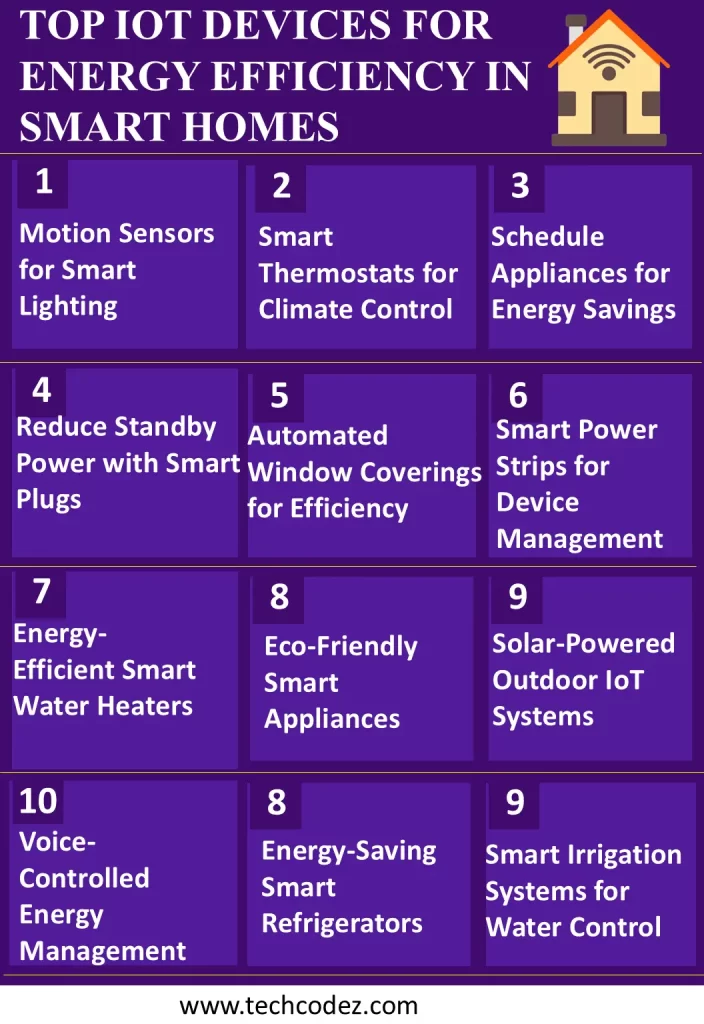
Final Discussion
Energy Efficiency with IoT Smart Homes Devices is most Trending Topic in current Era . Smart home technology based on IoT is a promising direction to make people or their users’ lives more efficient and environmentally friendly. Smart devices include smart thermostats, motion sensors, power strips, and energy-monitoring plugs that when adopted by homeowners can minimize energy wastage, cost and negative impacts on the environment. These are not mere comfort technologies but are smart technologies that allow monitoring, controlling, and automation in real-time, and in ways that respond to the user’s preferences and usage profile.
Considering the current upward trends in the costs of energy and the need for conservation, adopting IoT solutions in homes can be viewed as a proactive measure in the futuristic management of energy. The concept of IoT plays a crucial role in propelling an efficient future society that is conservative in the use of energy. This guide demonstrates how IoT can be used to transform the energy efficiency of homes and create a new generation of responsible energy consumers for the benefit of people and the planet.
FAQs
How do smart homes improve energy efficiency?
Smart homes using the IoT enhance power usage efficiency through controlling and overseeing the gadgets, setting power-saving plans, and adjusting the power usage depending on the day and time as well as the residence.
What are the most effective IoT devices for energy efficiency?
Smart thermostats, energy monitors, smart lighting, and smart power strips are highly effective for energy saving because they offer individual control measures and help cut wasted energy. They regulate the use of energy and prevent wastage where unnecessary.
How do thermostats help to reduce energy consumption?
Smart thermostats are able to pick up the temperature preferences of the users and control heating and cooling according to the occupancy of the house or a particular room, and will automatically lower the usage of energy when people are not at home or when a room is not in use.
Will IoT devices reduce energy bills?
Yes they can indeed by controlling the moment of energy saving and regulating the use of the appliances, IoT devices do save energy hence leading to lower energy bills.
How does a smart IoT-based water heater help to save energy?
Smart water heaters can be tailored to use patterns as the heaters only heat water when required but remain switched off and not in use instead of remaining on standby.
Will IoT devices help in the reduction of carbon emissions in smart homes?
Yes, by using less energy, IoT devices decrease a home’s impact on the environment and the amount of stress put on the power grid and the production of greenhouse gases.
How safe are IoT devices for energy efficiency in the context of data protection?
Many reliable IoT devices are shipped with some of the best security features such as encryption and secure access controls, but it is always critical to ensure that device software is updated to afford optimal security.

